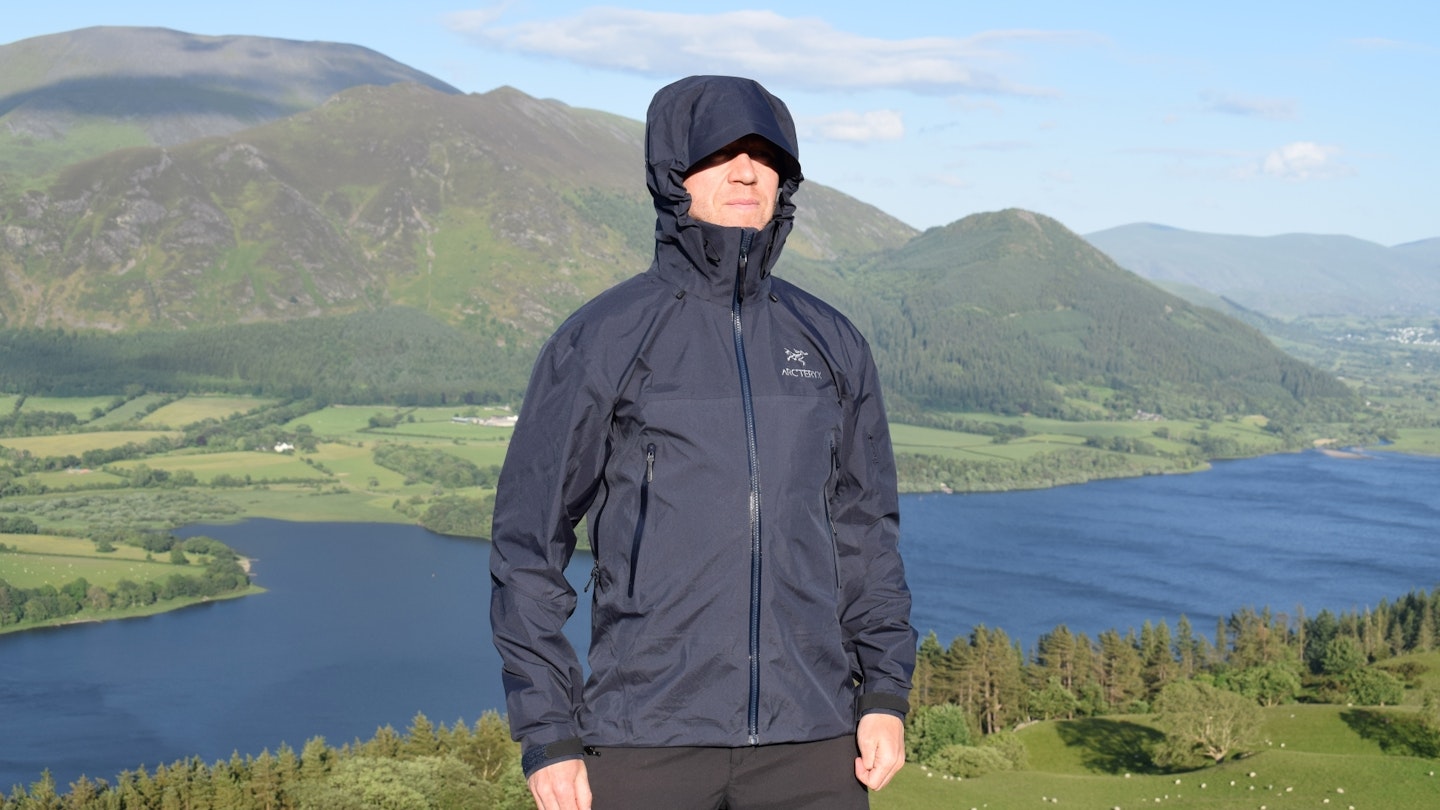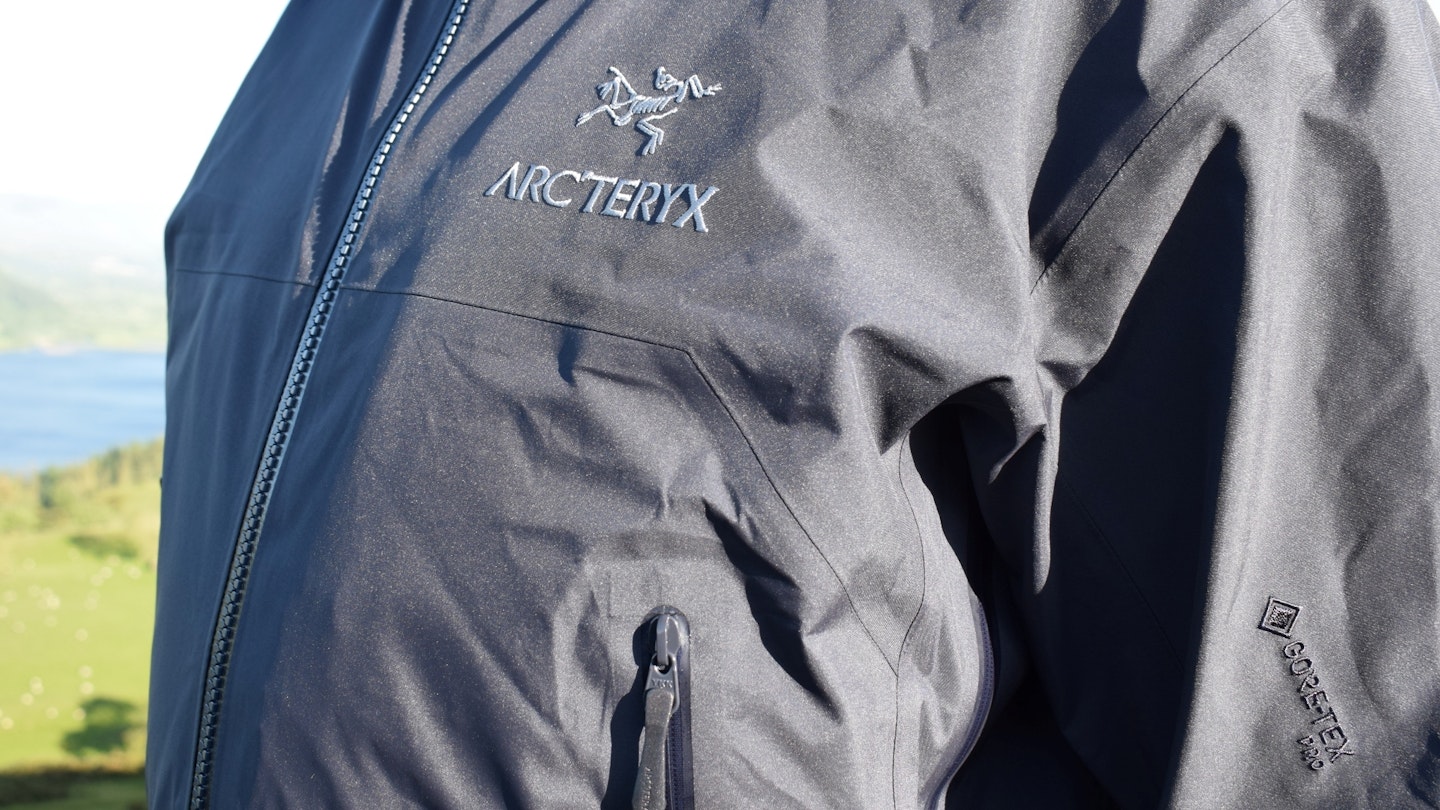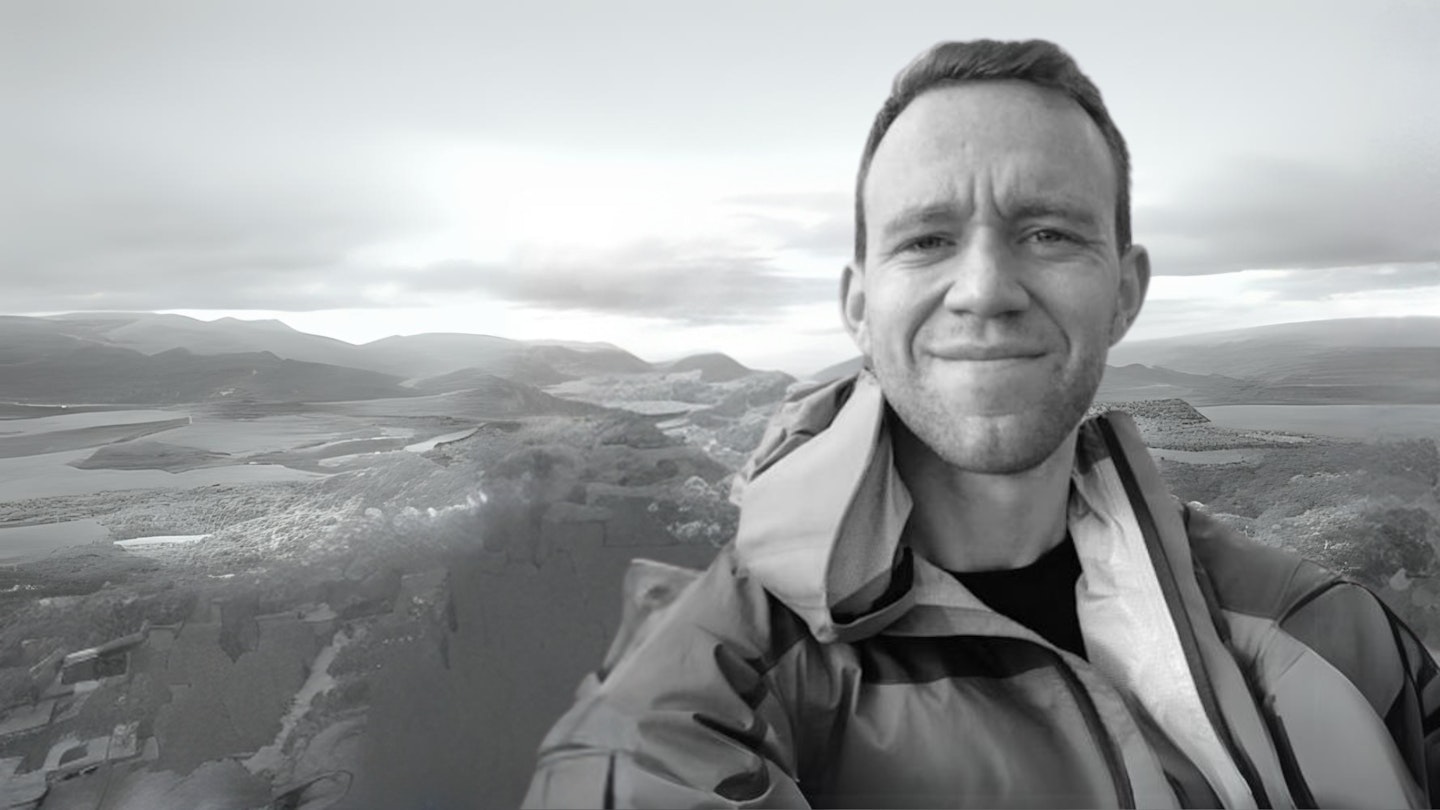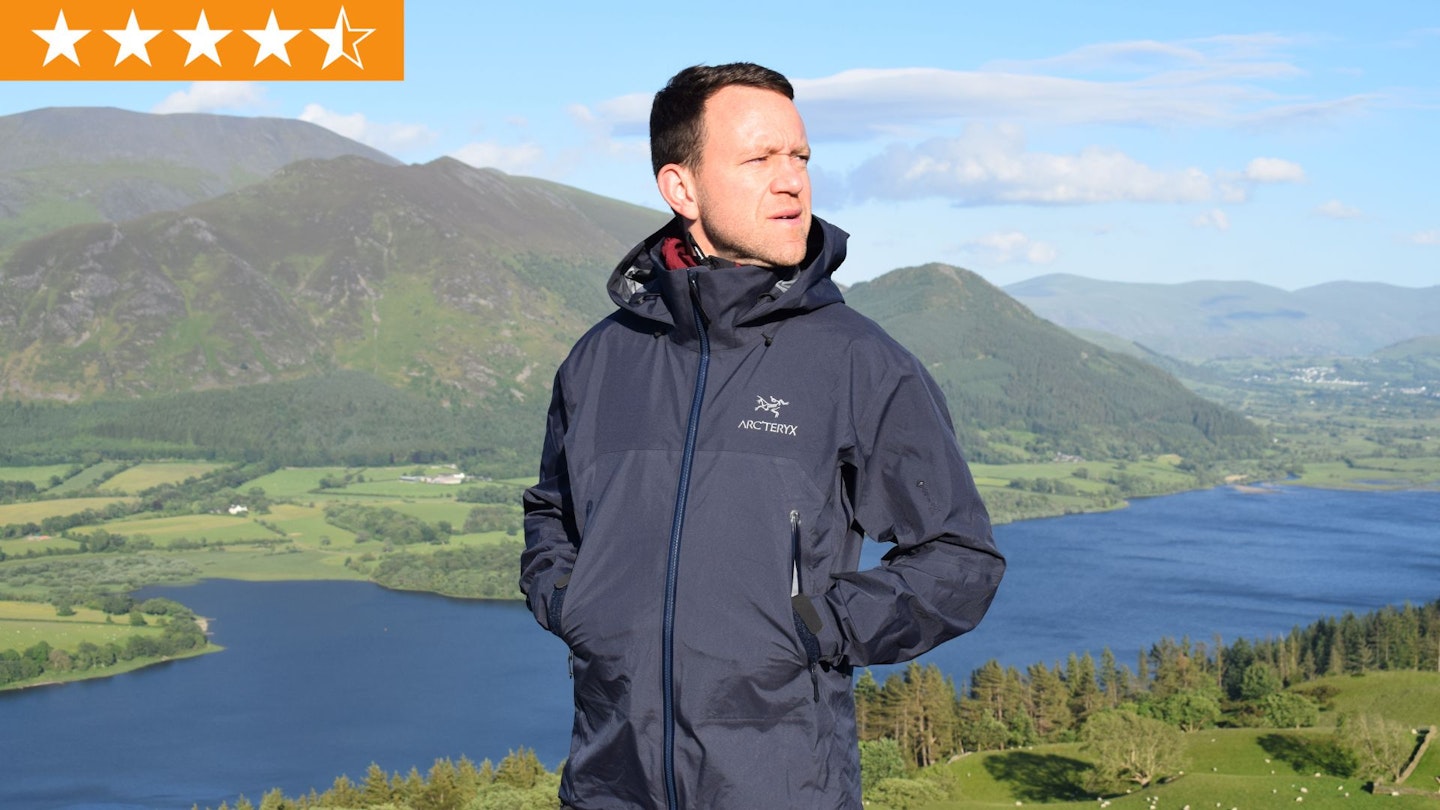The Arc'teryx Beta AR is the popular Canadian brand’s go anywhere, do anything waterproof jacket. It boasts highly protective, hard-wearing Gore-Tex Pro membrane, yet it manages to keep the weight down to an impressively lightweight 431g (men’s small).
It’s a member of the brand’s Beta family of products and has been designed for versatility.
Whether you’re a hiker, climber, skier, bikepacker, hipster, barber, butcher or candlestick maker, it’ll perform for you. Oh, and the AR in the name? That stands for ‘All Round’, just to hammer the point home.
It's a feature-rich jacket, with a well-designed storm collar, helmet compatible hood, integrated RECCO reflector for emergencies and a few pockets for handy storage.
Yes, it’s expensive (£550/$600) and, yes, some of your hard-earned cash is going on the ‘Dead Bird’ logo’s street cred, but reputations of the sort Arc’teryx enjoys are hard won, garnered only by producing gear that performs and that people want to wear.
So, if you’re looking to invest in a durable jacket that’ll have you covered for all eventualities, the Beta AR could be the one. Let's take a closer look at why it deserves a place on our list of the best winter waterproof jackets...
Pros
- Durable
- Gore-Tex Pro
- Excellent waterproofing stats
- Lightweight
- Integrated RECCO reflector
Cons
- Very expensive
- No recycled materials
- Not the most breathable
| RRP: | £550/$600 |
| Men’s sizes: | XS-XXXL |
| Women’s sizes: | XXS-XXL |
| Weight: | 431g (men’s small) |
| Fabric: | Bluesign-approved N40d and N80d 3-layer Gore-Tex Pro (28,000+ HH) |
Waterproofing and construction
The Beta AR uses a blend of 80-denier (for high wear areas) and 40-denier face fabrics, along with its Gore-Tex Pro membrane (the go-to membrane for technical mountaineering jackets).
These combine to create a robust and protective shell against blizzards, horizontal rain and dreich conditions.
The jacket features a 3-layer construction technique, which is generally considered the most protective and durable option out there.
Unfortunately, Gore-Tex no longer publicly states the hydrostatic head (HH) or breathability ratings of its materials, explaining in a blog post that the lab tests used for the scores are "not relevant to real-life situations".
Instead, the brand prefers to judge its products in its high-tech rain room simulator. It's an argument that makes sense, too. After all, there’s more to a jacket’s ability to repel water than its HH rating alone.
However, it doesn’t make like-for-like comparisons particularly easy for the general consumer.

Nevertheless, all Gore-Tex products come with Gore's "guaranteed to keep you dry" promise and our experience of Gore-Tex Pro is that you can stride out into the rain with confidence.
That all said, after a bit of persistence Gore-Tex’s PR team eventually they told us that all of their fabrics have a minimum 28,000mm hydrostatic head rating, but they don’t state different figures for different technologies, such as Gore-Tex Pro, Gore-Tex Performance and Gore-Tex Paclite.
As such, it's safe to say that the Arc’teryx Beta AR has a minimum hydrostatic head rating of 28,000mm, which is a reassuringly top-tier grade.
The specific type of Gore-Tex Pro used in the Beta AR jacket is the "most rugged" version you can get, meaning you should get extra durability and protection.
Other measures to keep the water out include rain shields on the watertight zippers, taped seams, the usual DWR coating to stop the face fabric from wetting out and a long cut for full coverage.
Shop this product
Breathability and ventilation

As mentioned, Gore-Tex no longer reveals its breathability ratings, though in my experience Gore-Tex Pro jackets are generally a little less breathable than those with less rugged construction, as is the case here.
However, there’s plenty by way of ventilation here to combat the clamminess, with long pit zips that can be opened and closed while on the move.
Of course, dumping heat can also be achieved by opening the front zipper too.
Shop this product
Weight and packability

Arc’teryx describes the Beta AR as light and packable, which it is… in relative terms. It weighs 431g (men’s small), which is very light for a technical, Gore-Tex Pro mountaineering jacket.
In fact, it’s the lightest winter-ready jacket I've tested this year by some margin.
However, it’s not particularly light compared to ultralight three-season jackets with a 2-layer or 2.5-layer construction.
The same goes for its packability. It’s fine, but not as packable as more minimalist shells, such as the 275g Montane Pac Plus or 270g Haglofs L.I.M GTX II – although these types of jacket are less rugged and less suited to full-on winter conditions.
With the Beta AR, the trade-off for the greater weight and lessened packability is durability and enhanced protection against the winter elements.
Shop this product
Fit and comfort

There are reasons Gore-Tex Pro jackets aren’t worn by trail runners. One is that it’s quite a rigid membrane, which isn’t the best when it comes to freedom of movement.
However, the ‘regular’ fit of the Beta AR means it doesn’t feel overly restrictive, and all-round comfort levels are very good.
Somehow the jacket hits a nice sweet spot between protection and comfort.
Shop this product
Features: Hood, pockets, wrist cuffs and zippers
In terms of pockets, there are two good-sized zippered front pockets, which are both large enough to take an OS map and placed in a way that they're still accessible when wearing a climbing harness or a hiking backpack’s hipbelt.
There’s also an internal valuables pocket, emblazed with the Beta and AR logo texts.
This is a relatively warm place to store a phone on mountaineering days, as lithium-ion batteries can suffer in cold conditions.
However, the Beta AR doesn’t feature the innovation of insulated padding for this pocket seen in Berghaus’ MTN Guide Gore-Tex Pro jacket.
The hem and cuffs are both adjustable, the former via a drawcord and the latter with Velcro fastenings.
As is often seen in premium mountain products these days, the Beta AR has an integrated RECCO reflector, which is a lightweight, passive transponder that emits a directional radar signal that can be picked up by rescue services and used to accurately locate a casualty in an emergency.

For those who aren’t aware, this is how the RECCO system works.
Perhaps best-known for use in avalanche rescues, a RECCO detector used by rescue professionals emits a directional radar signal, like the beam of a flashlight.
When the signal hits a RECCO reflector (on an outdoor user’s clothing or equipment), it's echoed back to the detector and pinpoints the rescuer to the direction and location of the victim.
Such a device could be a life-saver and is certainly useful if hiking in the Alps or North America.
It's worth noting that RECCO detectors aren’t widely used by rescue services in the UK, so the feature may be redundant for UK adventures.
There’s plenty of space underneath the hood for a helmet and it’s easy to adapt the fit of the hood via its four adjustment points, even if you're wearing thick winter gloves.
The Beta AR has garnered plenty of praise for its chin guard collar, which sits apart from the hood and effectively guards the neck against the conditions. It’s also soft against the skin thanks to its brushed micro-suede lining.
Shop this product
Sustainability
The Beta AR is made in Vietnam and is Fair Trade Certified, meaning it was produced in a factory where workers’ wellbeing has been ensured.
The program empowers workers by providing additional funds in order to improve their life chances.
Arc’teryx is committed to this approach and is aiming for 80% of its products to be certified by 2025.
As well as this, the face fabrics are bluesign-approved materials, which means they’ve been manufactured to strict safety and environmental requirements.
However, read the 'materials and care' small print on the Arc’teryx website and you’ll see that it’s a garment that 'may release plastic microfibres into the environment when washing'.
Of course, this issue is widespread across the outdoor clothing industry, so it’s perhaps up to the consumer to be mindful when considering how often to actually wash kit.

The Beta AR also features fluorocarbon content and is not, therefore, classed as PFC-free.
Arc’teryx has phased out the harmful C8, long-chain fluorocarbon chemicals from its entire range, but short-chain PFCs are still used in the waterproofing technology, as is the case with many other Gore-Tex jackets.
However, earlier this year Arc’teryx announced its transition to a new PFAS-free Gore-Tex material with an ePE membrane.
The brand told us: "This milestone in reducing our environmental footprint started with two of our best-selling Beta styles, the Beta Jacket and Beta Lightweight Jacket.
"Arc’teryx is in the process of transitioning its entire line to be PFAS-free in 2025 – including the Beta AR Jacket – through the process of updating all Gore-Tex products with the new ePE laminates.
"Designed and tested over the course of several years to be lighter, thinner and more sustainable, but just as durable as the materials Arc'teryx has used in the past, these new laminates are an exciting evolution, and a platform on which we will continue to innovate and build."
We haven’t tested the new ePE waterproofing in jackets such as the Beta Lightweight, but it’s worth noting that some online reviews suggest that it wets out quickly and requires re-proofing more frequently compared to the chemical-based approach.
It’s also worth noting that there’s no hint of recycled materials in the Beta AR jacket.
Given the potential durability of the jacket, I'd imagine Arc’teryx would make the case that this is a jacket that should last for decades, thus making it a more sustainable choice compared to a budget jacket that may only last a matter of years.
Shop this product
Verdict
A lightweight yet highly protective 3-layer jacket with Gore-Tex Pro technology – but it’s very expensive.
About the author

James Forrest writes regular features and route guides for Trail and has been one of our main gear testers for the last few years. James is based on the edge of the Lake District so when he isn’t off on his latest crazy adventure or challenge, he’s walking in his local fells.







